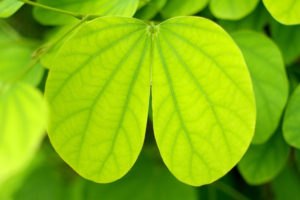 Here’s a neat experiment you can do to measure the rate of photosynthesis of a plant, and it’s super-simple and you probably have most of what you need to do it right now at home!
Here’s a neat experiment you can do to measure the rate of photosynthesis of a plant, and it’s super-simple and you probably have most of what you need to do it right now at home!
You basically take small bits of a leaf like spinach, stick it in a cup of water that has extra carbon dioxide in it, and shine a light on it. The plant will take the carbon dioxide from the water and the light from the lamp and make oxygen bubbles that stick to it and lift it to the surface of the water, like a kid holding a bunch of helium balloons. And you time how long this all takes and you have the rate of photosynthesis for your leaf.
Here are the steps for the experiment:
Please login or register to read the rest of this content.


When it comes to inside light sources, a desk lamp with an incandescent bulb works best. You could also try this outside on a sunny day. You should see results in about five minutes.
The leaf isn’t coming up, even after we leave it for a while. Could our light (a flashlight) not be strong enough? What kind of lamp did you use?
It can take about 4 or 5 minutes.
How long should it take for the leaf to travel to the top?
Yes, getting the air out is important, otherwise you won’t be able to see it rise from the bottom. Use the syringe method or gently press it against the side of the glass with your thumb. If that still doesn’t work, try a different leaf, like spinach.
Stupid question: how do you stick the leaf to the bottom of a container? Ours just float
this is super fun
cool I tried and it was cool